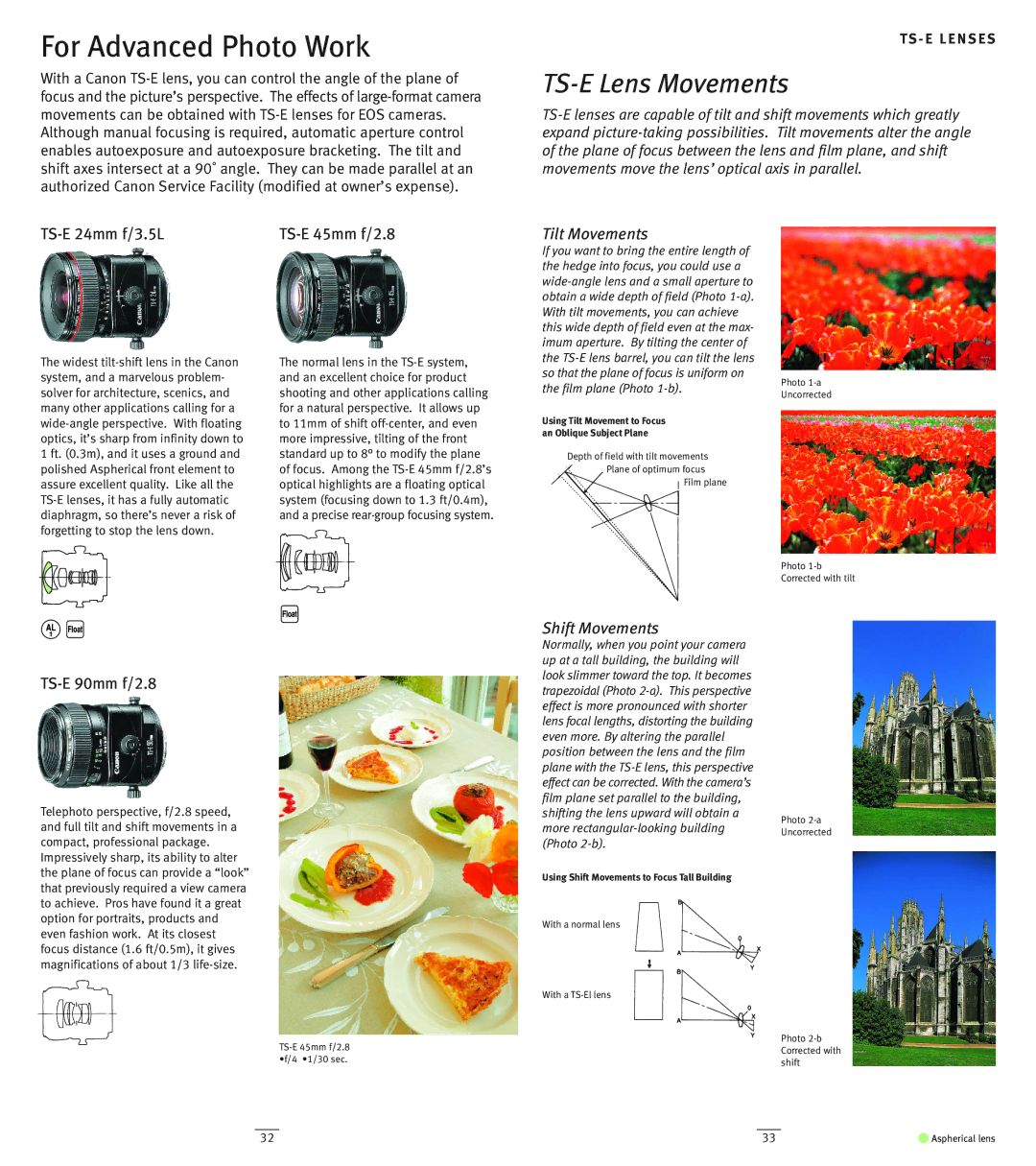
For Advanced Photo Work
With a Canon
TS - E LENSES
TS-E Lens Movements
|
|
Tilt Movements
The widest
The normal lens in the
If you want to bring the entire length of the hedge into focus, you could use a
Using Tilt Movement to Focus an Oblique Subject Plane
Depth of field with tilt movements Plane of optimum focus
Film plane
Photo
Uncorrected
Photo
TS-E 90mm f/2.8
Telephoto perspective, f/2.8 speed, and full tilt and shift movements in a compact, professional package. Impressively sharp, its ability to alter the plane of focus can provide a “look” that previously required a view camera to achieve. Pros have found it a great option for portraits, products and even fashion work. At its closest focus distance (1.6 ft/0.5m), it gives magnifications of about 1/3
Shift Movements
Normally, when you point your camera up at a tall building, the building will look slimmer toward the top. It becomes trapezoidal (Photo
Using Shift Movements to Focus Tall Building
With a normal lens
With a
Photo
Photo
32 |
| 33 | ● Aspherical lens |
